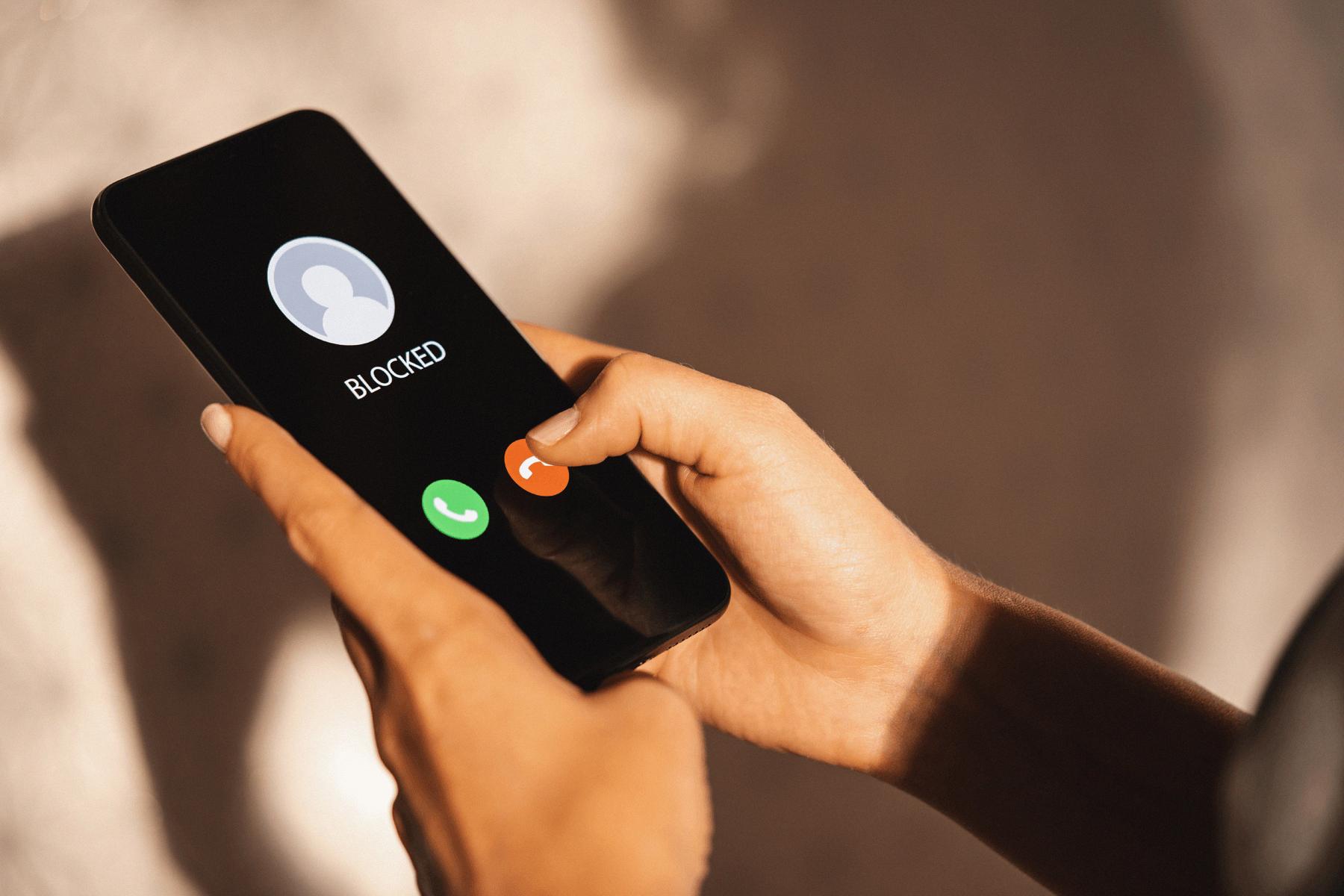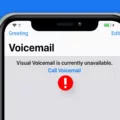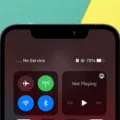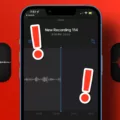The iPhone is a popular smartphone known for its sleek design and advanced features. One of the features that users often find useful is the ability to block unwanted calls and messages. However, even when a number is blocked, the caller can still leave a voicemail. If you want to prevent blocked numbers from leaving voicemails on your iPhone, there are a few options available.
Firstly, you can block a number directly from your recent calls list. Simply open your Phone app and go to the Recents tab. Find the number you want to block and tap on the small “i” icon next to it. Scroll down to the bottom of the contact info page and tap on “Block this Call.” This will prevent the blocked number from ringing your phone, but they can still leave a voicemail.
To stop blocked numbers from leaving voicemails, you can use a third-party app that labels blocked numbers as spam. These apps analyze incoming calls and automatically send them to voicemail without notifying you. They can also provide additional features such as call recording and call blocking based on known spam numbers.
Another option is to contact your cellular carrier and inquire if they offer a service that can block numbers at the carrier level. Some carriers provide this service, which means that the blocked numbers won’t be able to reach your phone or leave voicemails. However, availability and terms may vary depending on your carrier.
If you are comfortable with more advanced settings, you can try using a call forwarding workaround to prevent blocked numbers from leaving voicemails. By forwarding all calls to a number that doesn’t have voicemail enabled, the blocked numbers will not be able to leave a voicemail. However, this method requires you to set up call forwarding and may not be suitable for everyone.
While it is not currently possible to directly prevent blocked numbers from leaving voicemails on an iPhone, there are a few workarounds and options available. Whether you choose to use a third-party app, contact your carrier, or explore advanced settings, you can find a solution that suits your needs and helps you avoid unwanted voicemails from blocked numbers.
Why Can A Blocked Number Still Leave A Voicemail On IPhone?
There are several reasons why a blocked number can still leave a voicemail on an iPhone:
1. Call Blocking vs Voicemail Blocking: When you block a number on your iPhone, it primarily prevents calls and messages from that number from reaching your device. However, it does not directly block voicemails. Voicemails are handled by your cellular carrier’s system, not your iPhone’s operating system. So, even if a number is blocked on your iPhone, it can still leave a voicemail because it bypasses the blocking feature.
2. Voicemail System: Voicemails are stored on your cellular carrier’s voicemail system, which is separate from your iPhone. When someone calls and leaves a voicemail, it is recorded and stored on the carrier’s servers. Your iPhone receives a notification or a visual indication that a new voicemail is available, but the voicemail itself is not stored on your device. Therefore, blocking a number on your iPhone does not prevent it from reaching your carrier’s voicemail system.
3. Network Routing: When a caller leaves a voicemail, the call is routed through the cellular network and directed to the carrier’s voicemail system. This routing process is independent of the blocking settings on your iPhone. Even if a number is blocked, the call can still be routed to the voicemail system based on the carrier’s network settings.
4. Technical Limitations: Blocking a number on your iPhone is a feature provided by the operating system, but it cannot control the functionality of the carrier’s voicemail system. The ability to block voicemails would require integration between the iPhone’s blocking feature and the carrier’s voicemail system, which currently does not exist.
A blocked number can still leave a voicemail on an iPhone because the blocking feature on your device does not directly affect the voicemail system operated by your cellular carrier. Voicemails are handled separately and routed through the carrier’s network, bypassing the blocking settings on your iPhone.

How Do I Stop A Blocked Number From Leaving Voicemails?
To stop a blocked number from leaving voicemails on your Android phone, you will need to use an app that can label blocked numbers as spam. The specific options available to you may vary depending on your phone carrier. Here are some steps you can take:
1. Check if your phone carrier offers a built-in feature: Some phone carriers, such as Verizon, have their own spam call blocking and labeling features. Check your carrier’s website or contact their customer support to see if they offer any solutions to block voicemails from blocked numbers.
2. Use a third-party call-blocking app: There are several call-blocking apps available on the Google Play Store that can help you block calls and prevent voicemails from blocked numbers. Some popular options include Truecaller, Hiya, and Mr. Number. Install one of these apps and follow the instructions to block numbers and prevent them from leaving voicemails.
3. Set up call forwarding: Another option is to set up call forwarding to a number that doesn’t have voicemail service. This way, when a blocked number calls, it will be automatically forwarded to the designated number without the ability to leave a voicemail. However, this method requires an additional phone number or a separate line.
Remember, blocking a number on your Android phone will only prevent it from ringing and will not stop the caller from leaving voicemails unless you use an app that labels blocked numbers as spam.
How Do You Block Someone So They Can’t Leave Voicemail On IPhone?
To block someone on your iPhone so that they cannot leave voicemail, follow these steps:
1. Open your Phone app and go to the Recents tab.
2. Look for the phone number you want to block and tap the ⓘ (information) icon next to it.
3. Scroll down to the bottom of the contact information page and tap on “Block this Call.”
Alternatively, if you want to block a specific voicemail message, you can follow these steps:
1. Open your Phone app and go to the Voicemail tab.
2. Find the voicemail message from the person you want to block and tap the ⓘ (information) icon next to it.
3. Scroll down to the bottom of the voicemail information page and tap on “Block this Caller.”
By following these steps, you can effectively block someone from leaving you voicemail on your iPhone.
How Do I Block Voicemail On IOS?
To block voicemail on iOS, you can follow these steps:
1. Open the “Phone” app on your iPhone.
2. Tap on the “Voicemail” tab at the bottom right corner of the screen.
3. Tap on the “Greeting” button located at the top left corner of the screen.
4. Select the “Custom” option.
5. Record a blank or silent greeting by not saying anything and then tapping on the red “Stop” button.
6. Tap on “Save” to set the silent greeting as your voicemail greeting.
7. Return to the “Voicemail” tab and tap on “Greeting” again.
8. Select the “Default” option this time.
9. Confirm your choice by tapping on “Save”.
By following these steps, you will have effectively blocked voicemail on your iPhone. This means that callers will no longer be able to leave you voicemail messages. Instead, they will hear a generic “This mailbox is not set up” message when they try to leave a message.
Please note that blocking voicemail on iOS may vary slightly depending on the version of iOS you are using. However, the general steps outlined above should work for most versions.
Conclusion
IPhones are powerful and versatile devices that offer a wide range of features and functionalities. They are known for their sleek design, user-friendly interface, and seamless integration with other Apple products. With advanced camera capabilities, high-quality displays, and fast processors, iPhones are perfect for capturing and enjoying media content. Additionally, iPhones provide a secure and private user experience with features like Face ID and encrypted messaging. They also offer a vast selection of apps and services through the App Store, allowing users to personalize and enhance their device according to their needs. Whether it’s for work, entertainment, or staying connected, iPhones continue to be a popular choice among smartphone users worldwide.








